Hop Hornbeam (Ostrya virginiana) of the Birch (Betulaceae) family is a woodland to woodland-margin tree with staminate (male) and pistillate (female) catkins on the same tree (a monoecious species). The genus name is based on Latin and Greek words for “scale” in reference to prominent scale-like bracts on early catkins. The specific epithet is in reference to the species’ original description from the colony of Virginia. In the U.S., its occurrence is widespread across the eastern half of the country, extending into southeastern Canada. In Arkansas, it occurs statewide except for some low-lying areas of the Mississippi Alluvial Plain. It is adaptable to a wide range of climates and soils with preferred habitats in Arkansas trending toward wooded-deciduous environments on well-drained north slopes and lowlands; along with woodland margins, stream banks and open areas. Other common names include Eastern Hornbeam and Ironwood. The “hop” portion of the common name is a reference to the similarity of the tree’s aggregated fruits to those of Wild Hop vine (Humulus lupulus), a variety of which is an Arkansas native of conservation concern. The word “hornbeam”, originating from the European Hornbeam (Carpinus betulus), relates to hardness of its wood (may be polished to a shine like horn) and the Old English word for tree (beam) or, alternately, may refer to the use of the wood as yokes (beams) between horned oxen.
This small to medium-size deciduous tree may grow a foot per year when young but has slow growth by the time it reaches flowering stage at 20+ years. Trees, growing to 40 feet tall and 25 feet wide*, may have a single trunk or several near-ground trunks of varying size. Long, lower branches tend to be horizontal to slightly drooping while upper limbs are ascending. Lower branches drop-off cleanly as growth is concentrated to higher-up branches. Trees in the understory tend to be lanky with widely spaced branches while trees in full sun eventually develop a broad-irregular to rounded crown and have dense branching. With lateral twigs lengthening year-after-year, and thus widening each division of a branch, overall branch structure becomes broad and rather planar. The weight of leaves and fruits on the weak lateral twigs cause twigs to become descending although overall branch structure is ascending. Wood is white, dense and heavy. Non-suckering roots are wide-spreading and shallow.

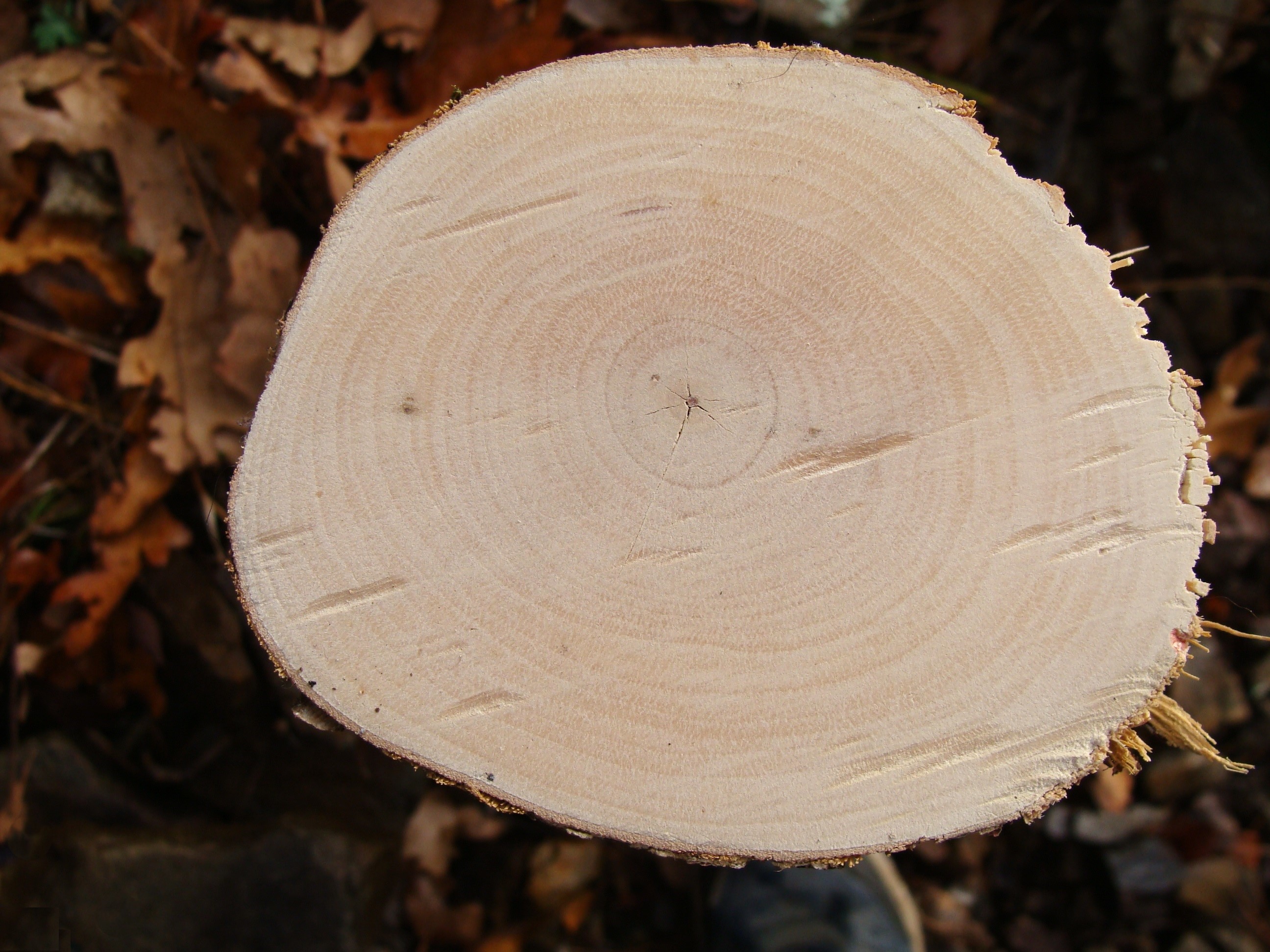
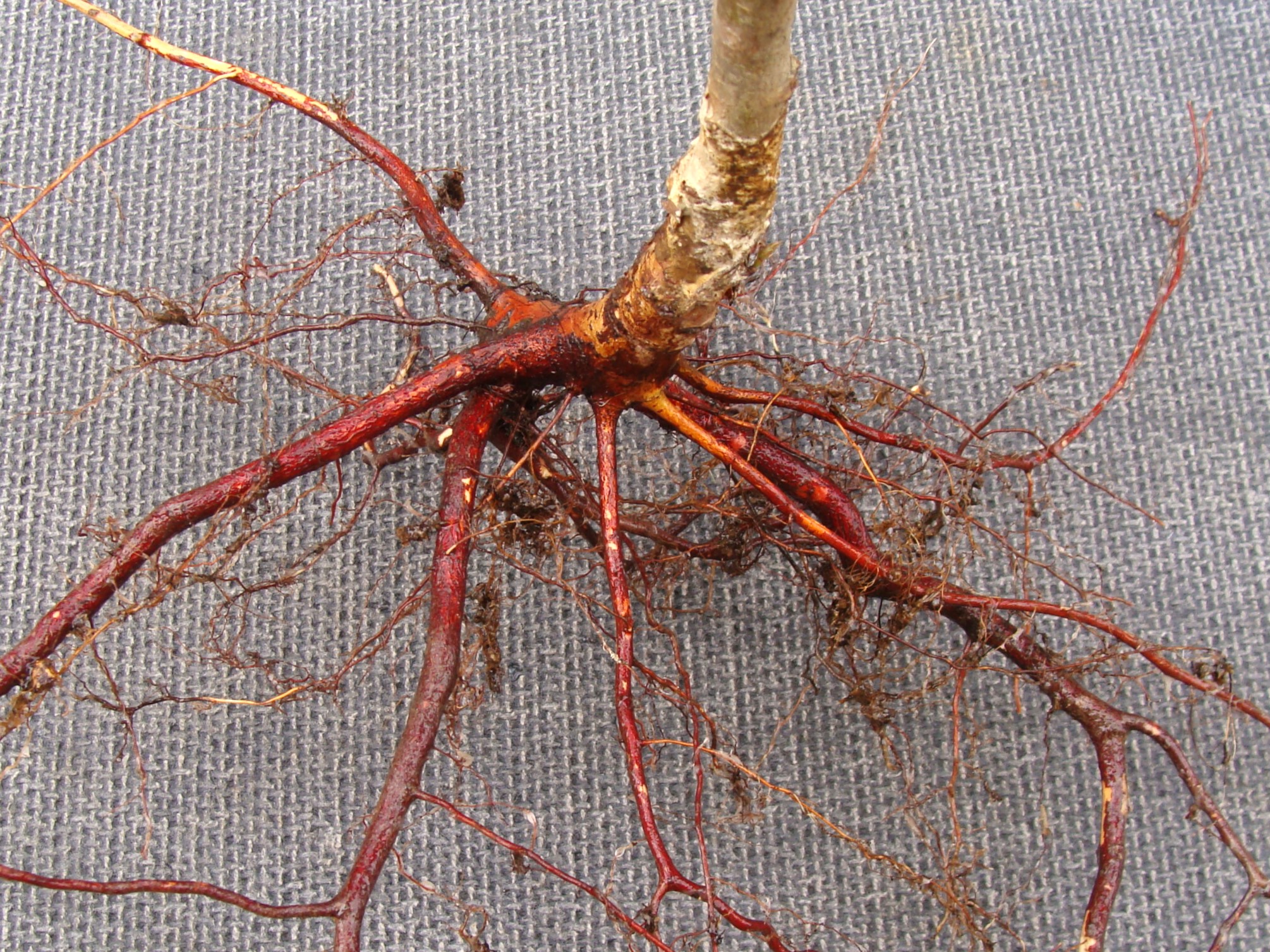
New twigs, initially pale green and sparsely to densely soft-pubescent, become grayish-brown to reddish in winter and glabrous over several growth-years. Small white to tan, elongate lenticels (pores), becoming noticeable in the second growth-year, are set at 90⁰ to branch length. When the gray, fairly smooth branches/limbs achieve a diameter of 1± inch, the thin bark begins to fissure into narrow rectangular, flat-topped plates on which lenticels are no longer apparent. With continued expansion of branch/limb diameter, bark may exfoliate to such an extent that long, narrow, hardly-attached strips of bark hang loosely. The degree of exfoliation on mature trees varies by tree, but in general, bark on the lower portion of trunks remain relatively tight while that of the upper trunk and near-by portions of limbs develop the long loose strips.
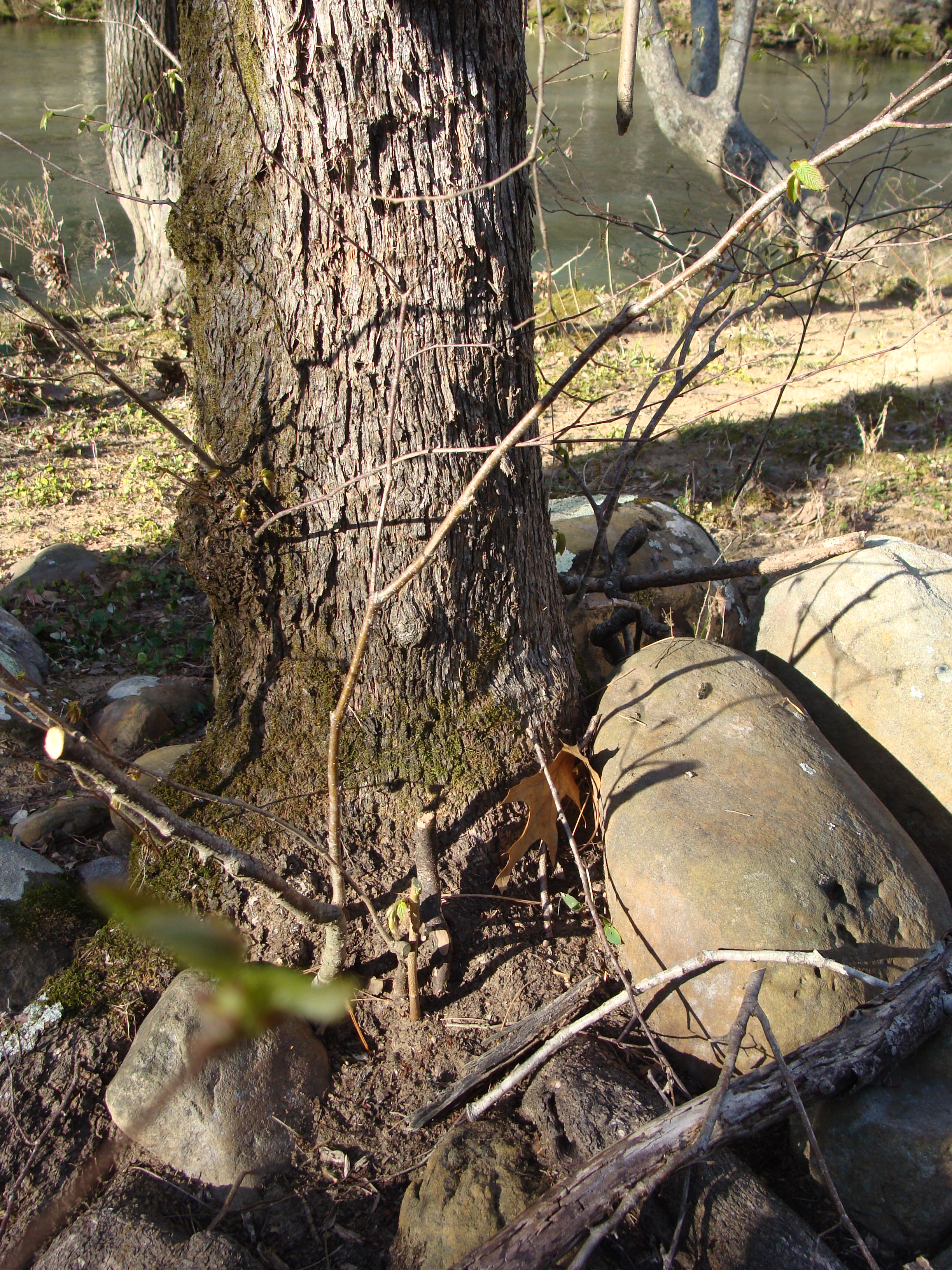
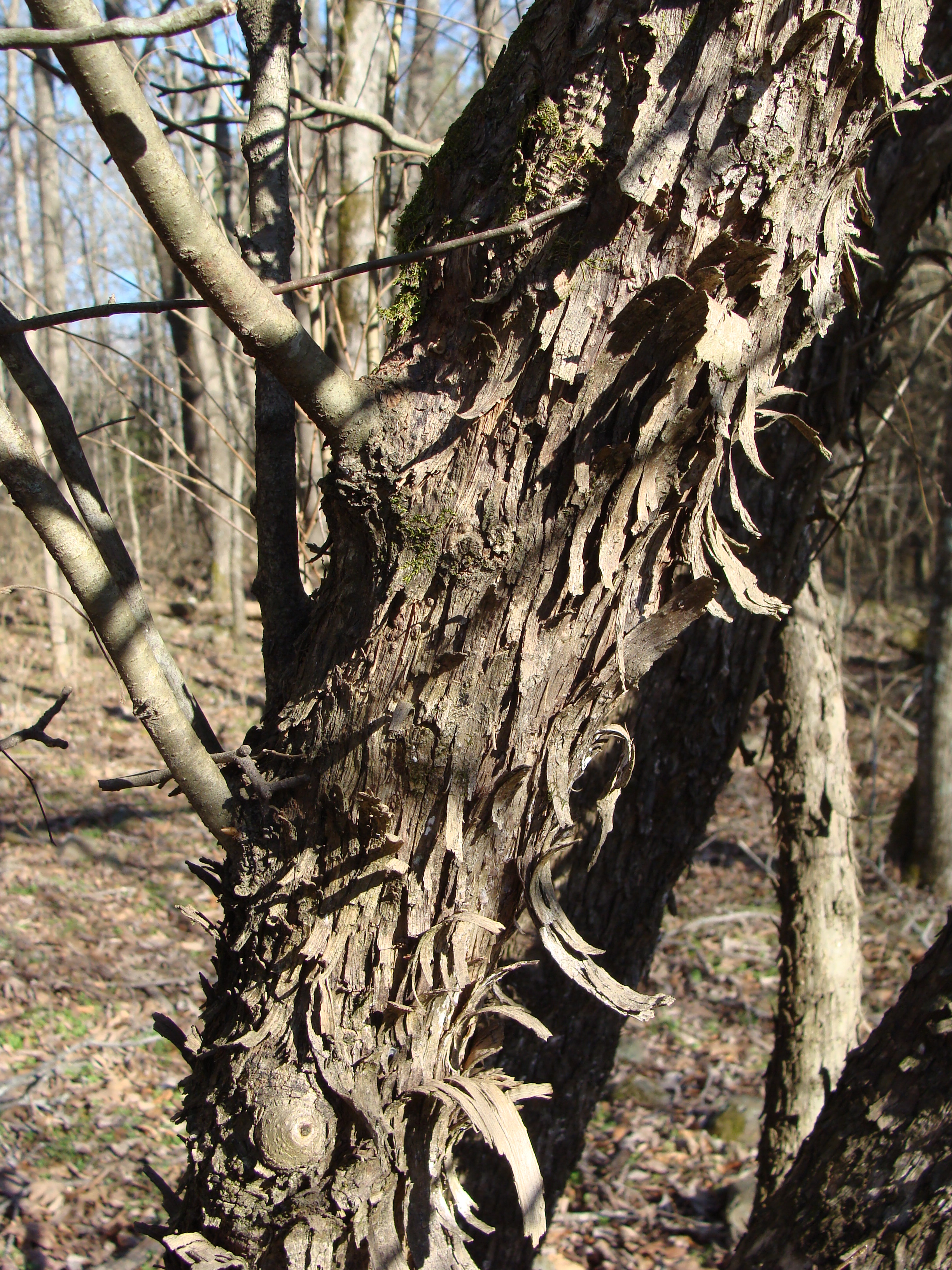
Leaves are short-petiolate, elliptic to oval-lanceolate and have prominent, unevenly double-serrate margins from near leaf base to leaf apex. The teeth are sharply pointed. Leaf bases vary from narrowly rounded to shallowly cordate and may be oblique. From the leaf wide-point at mid-blade distally, blades gradually narrow in acute fashion to just below apices where blades often become abruptly acuminate resulting in narrow-pointed apices. The alternate leaves are 2-5 inches long (including a ¼+ inch petiole) and 1-2 inches wide. On a twig, smallest leaves are at twig-base. Leaves are dark green above and yellowish green below. Weakly arcuate pinnate secondary veins, in 12-16 slightly off-set parallel pairs, extend to tips of the larger marginal teeth. Upper and lower leaf surfaces feel soft and have variably appressed short pubescence. Pubescence on lower surface is denser and more villous, especially along veins and vein axils. Short petioles, also variably pubescent, twist leaf blades to best lighting so that twigs of a branch become oriented horizontally. Fall leaf color is yellow changing to crinkly tan before leaf-drop, with those of young trees and lower branches being somewhat marcescent (persistent).

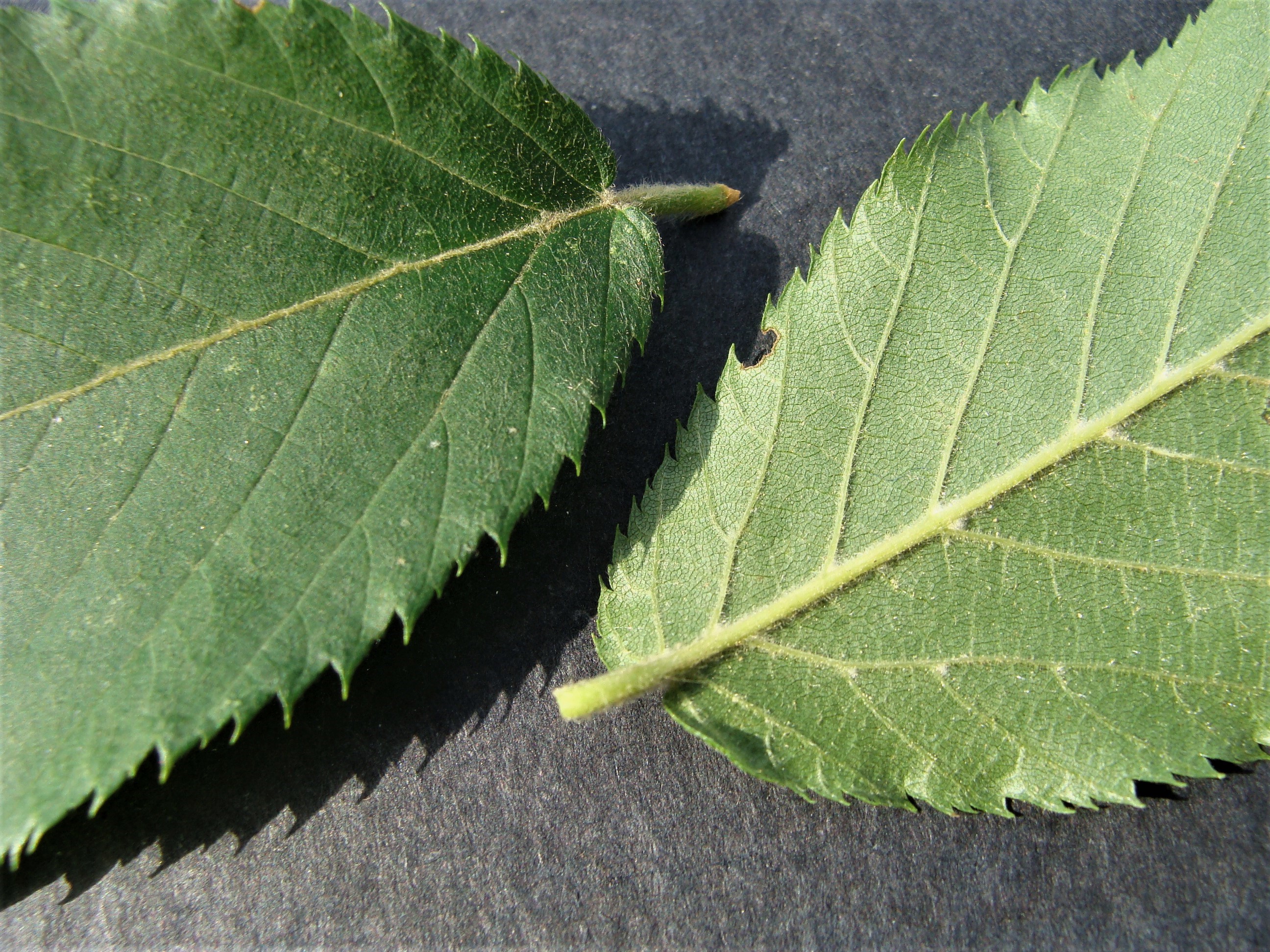

Sharply pointed overwintering buds, round in cross-section with a pointed tip, are formed by several layers of imbricated glabrous bud-bracts. Buds, axillary to fallen leaves along the previous year’s twigs, are terminal and pseudo-terminal (both set in-line with twig) and lateral (set at 45⁰). Exposed portions of the tightly clasping buds are green in fall but change to a reddish brown into winter before becoming mostly green in spring as bracts unfurl. All leaves and catkins (aka aments) develop from buds that developed the previous growth-year. Separate staminate and pistillate catkins are on the same twigs and same tree.
Trees that are 20+ years old produce slim catkins of closely arranged sessile flowers along a central rachis (spicate inflorescence); sepals and petals absent. Narrowly cylindric staminate catkins grow from pseudo-terminal buds and lateral buds in mid-winter, with 1-4 catkins per leafless peduncle. Pistillate catkins, growing from terminal buds and lateral buds, appear in mid-spring. Flowers mature from catkin-base to catkin-apex. Pollination is by wind.
Early-growth staminate catkins are covered with tightly imbricated, brownish red, laterally rounded floral bracts with sharp apices. Floral bracts are regularly spaced along the rigid early-catkin. Approaching mid-spring, elongating catkins become pendulous and flexible as flowers separate slightly one-from-another. A mature flower consists of the cupped floral bract subtending a tight cluster of 3-14 stamens. The floral bract, yellowish green with a reddish tip, is broadly rounded with a sharp apex and fringed margins. Stamens consist of very short filaments topped with knobby, two-lobed anthers. Anthers open into tiny cup-like structures so that pollen is released to the breezes. A mature staminate catkin, bearing several hundred flowers, may be ¾-2¼ inches long on peduncles that are ½-1¼ inches long. Staminate catkins reach anthesis in mid-spring at the same time as pistillate catkins. Staminate catkins and their peduncle drop-off the twig shortly after pollen release.
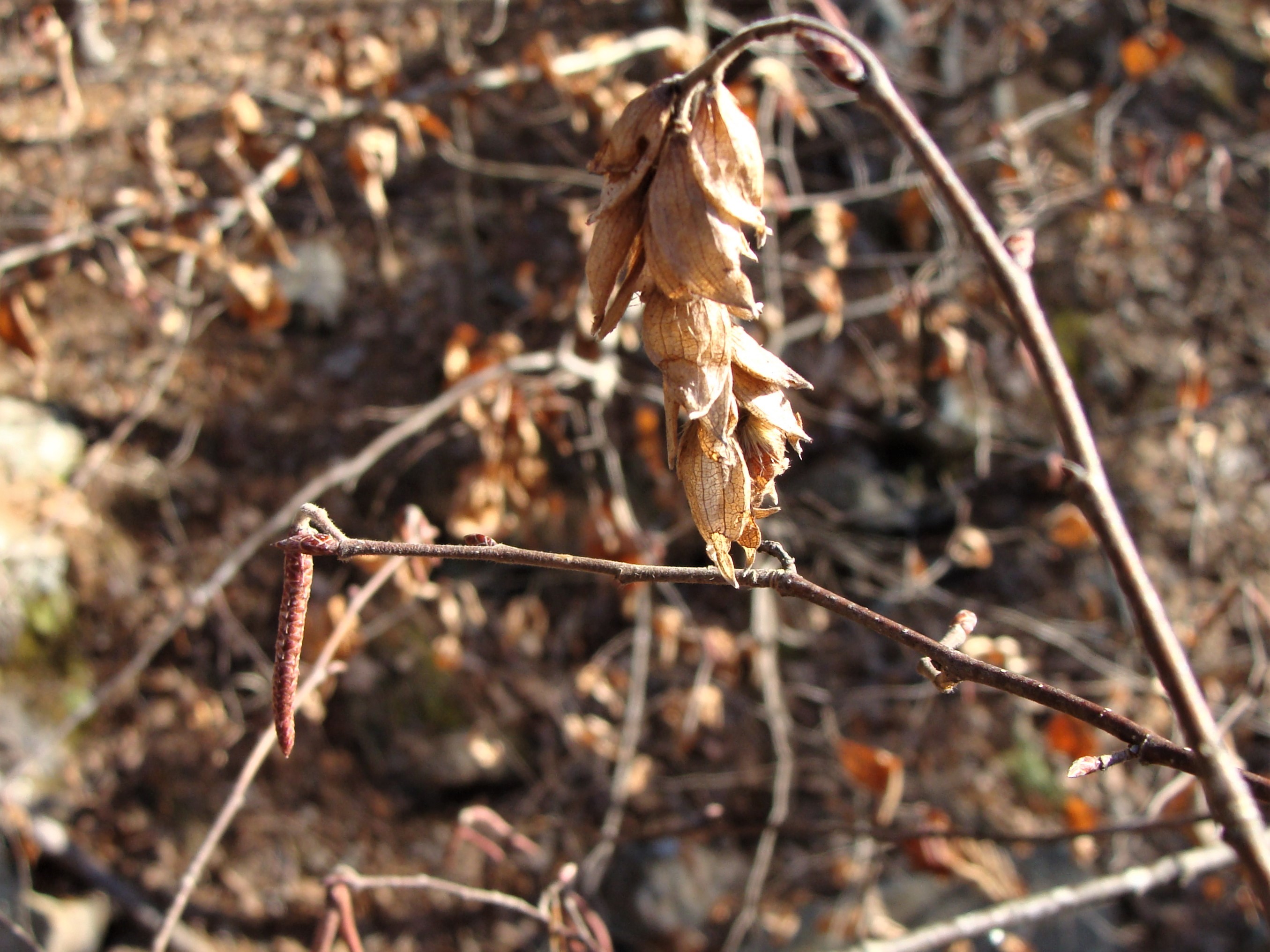
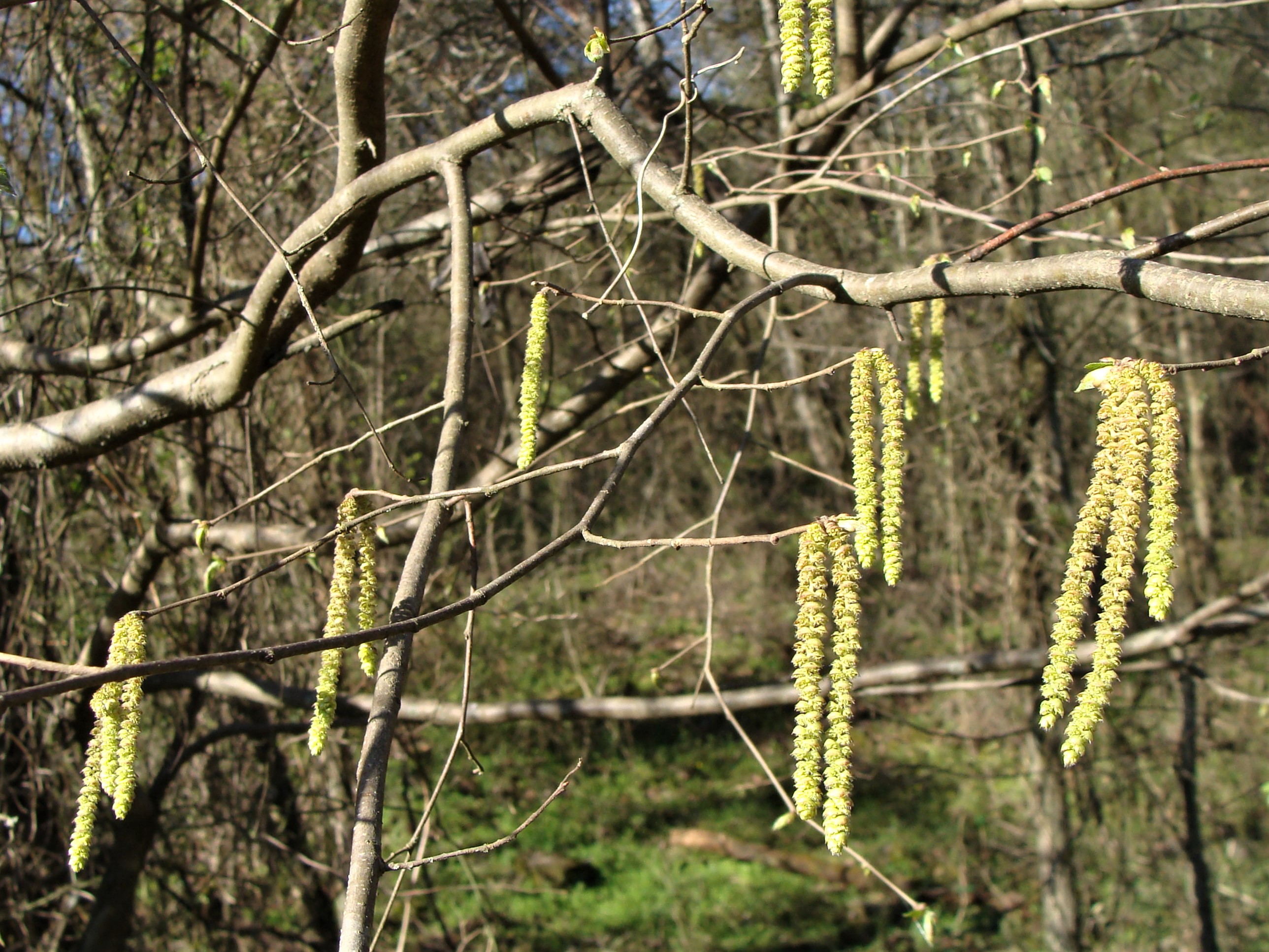


Pistillate catkins occur at the growing tips of new leafy twigs; that new growth either lengthening existing twigs (from terminal buds) or forming new twigs (from lateral buds). Catkins have dense, silky (velutinous) loosely appressed pubescence. Early-growth catkins, ⅛-½ inch long, occur singly in mid-spring. Catkins are composed of elongate-triangular floral bracts with sharp apices. Floral bracts subtend an unseen side-by-side pair of pistils – each with a pair of long, red, wispy styles. Each pistil (ovary + style + stigma) is enclosed by a short, sack-like involucre, half the length of the ovary. Styles extend well beyond the floral bract where stigmas catch pollen carried by breezes. Floral bracts drop off once flowers are fertilized.
Once fertilized, involucre size increases greatly as they become large air-filled sacks. The ovoid involucres are flattened with the only opening being a small hole at the apex through which the styles extend. The enlarging pale-green catkins persist into fall when they dry to a dull brown, at which time they are 1-2½ inches long and ¾-1 inch wide. The tissue-thin involucres protect a single, free-standing nutlet attached at the bottom of the involucre. When nutlets are mature, involucres are to ⅞-inch long and ½-inch wide and as much as ⅛-inch thick at the nutlet. From mid-fall into winter, individual involucres drop off the rachis with the nutlet remaining attached at the involucre’s base. A few catkins may persist on trees into winter.


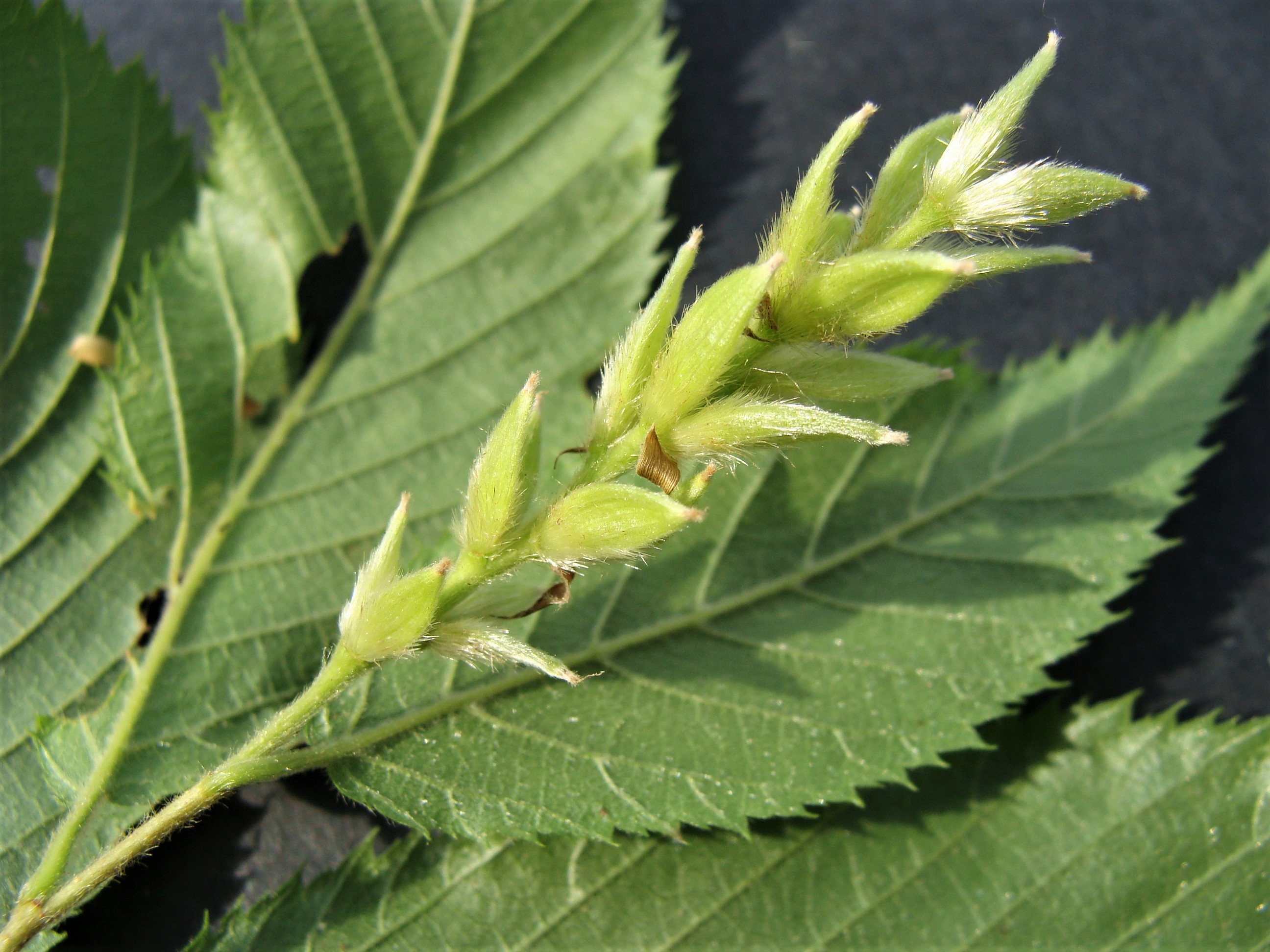
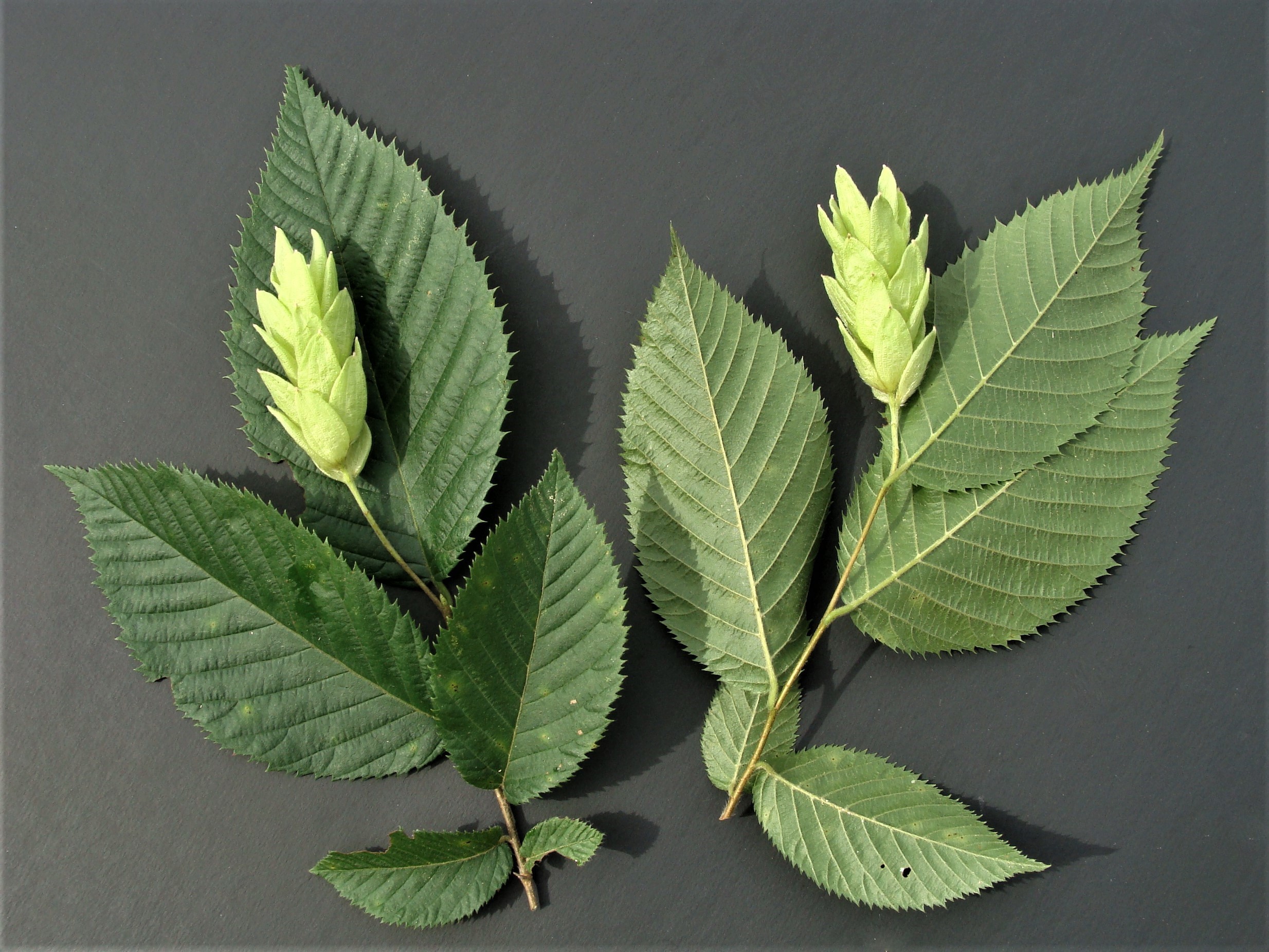
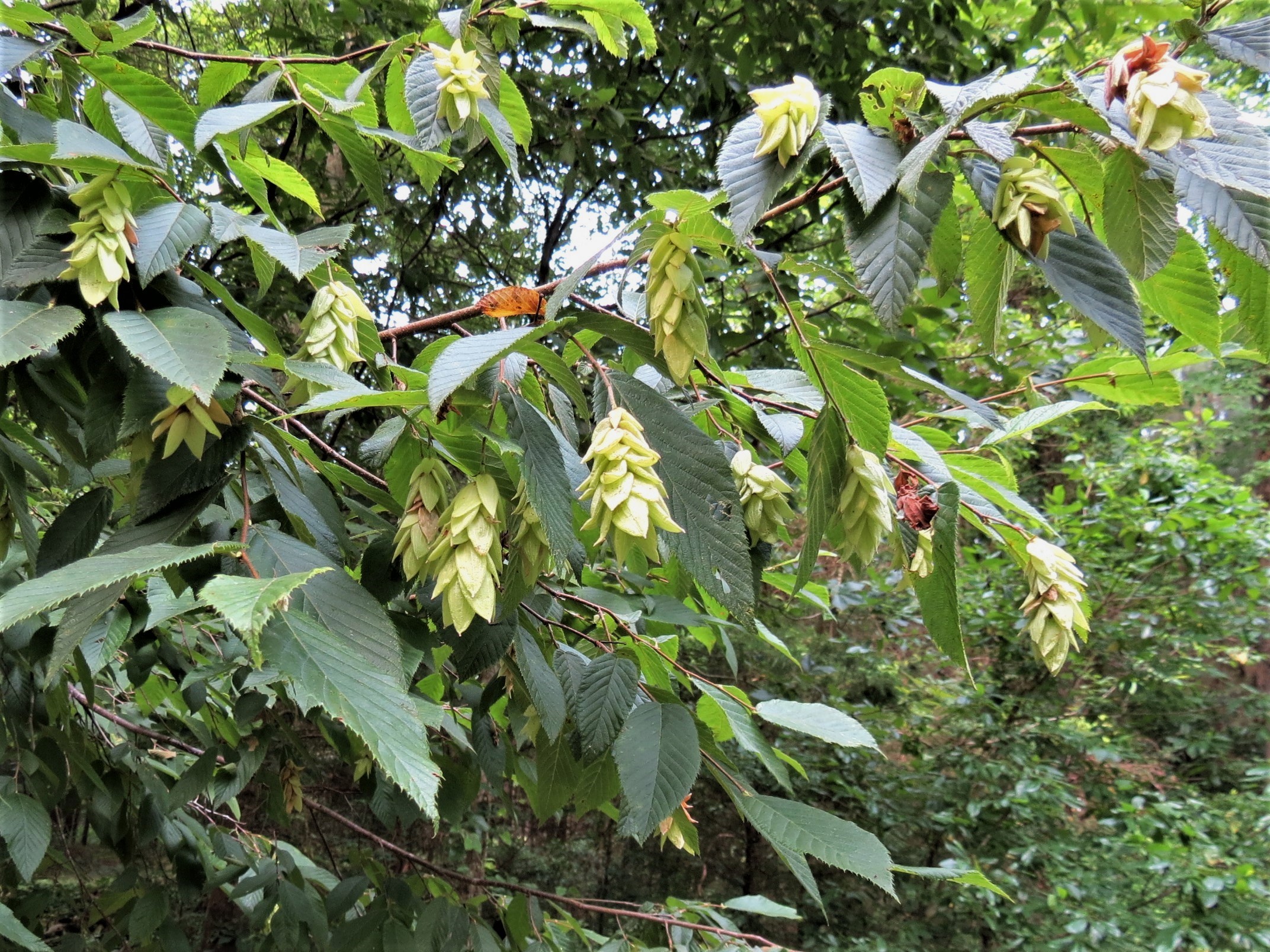
Bases of the free-standing, oval nutlets are tightly attached at the interior-base on the sack-like involucre. With maturity, the light-weight and buoyant involucres individually drop off their rachises with their nutlet secured inside. Nutlets are dispersed by wind, flowing water and wildlife. Involucres disintegrate quickly. The smooth gray-brown nutlets, to about ¼ inch long and ⅛ inch wide, widest at mid-nutlet, have a rounded base and acute pointed apex. Involucres and nutlets are about the same shape although nutlets are narrower.


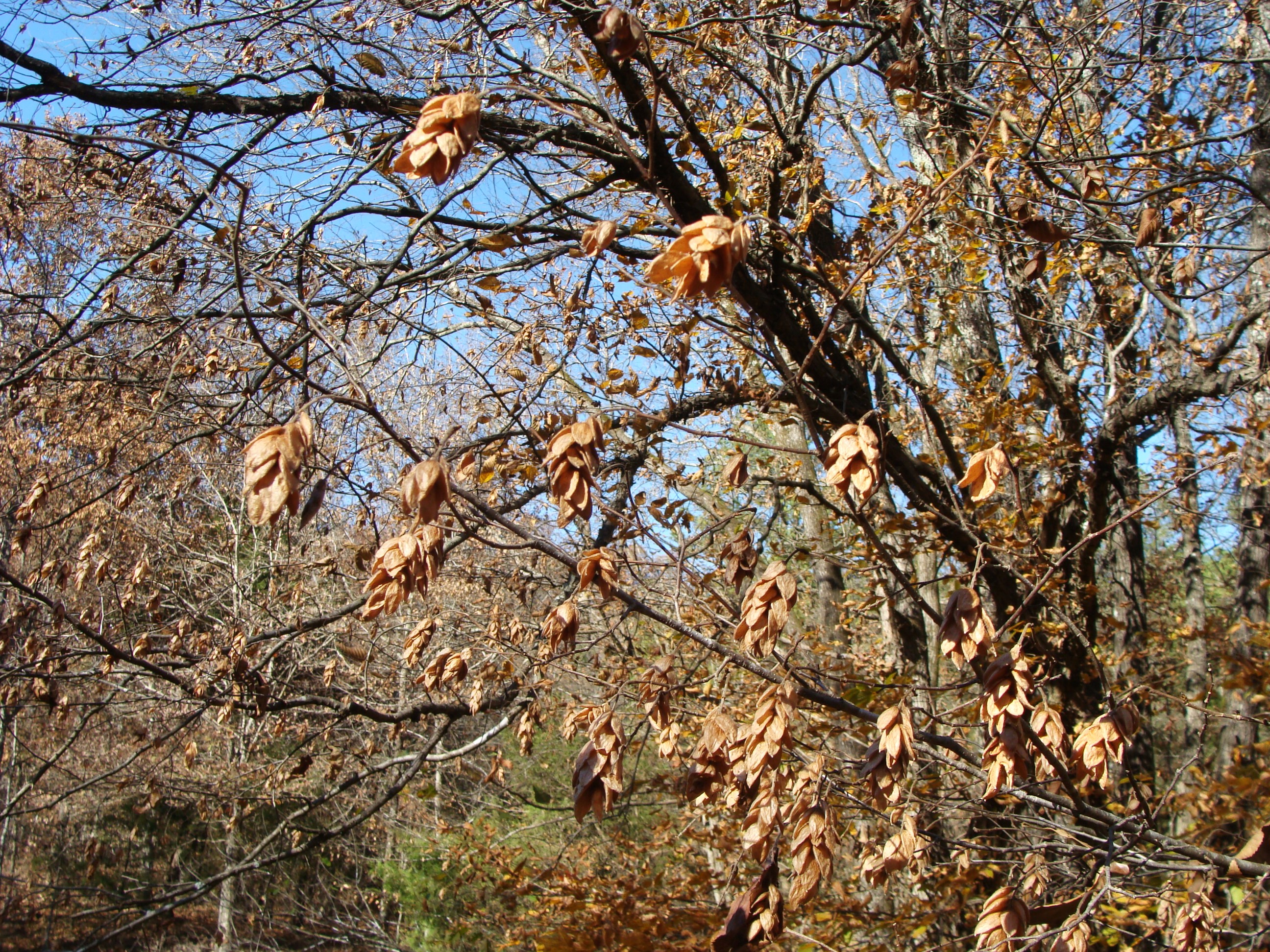
Hop Hornbeam trees that are 20+ years old have outstanding ornamental characteristics year-round. If already in a landscape, and not overly abundant, it would be an excellent tree to preserve. Seedlings can be established in a wide variety of well-drained soils in shady to sunny sites. It is a drought tolerant species. Those is shade will remain open, tall and graceful while those in sun will, over time, become dense and rounded. Lower limbs are spreading and self-shedding and if damaged the tree will grow with multiple trunks. Insects feed on the foliage and small mammals, birds (including turkey) eat the nutlets, but it is not a preferred food choice of deer. Due to its survival instincts and ready self-seeding, it may become “weedy” in some settings.
In Arkansas, the closest related species is Carpinus caroliniana, which has common names similar to those of Ostrya virginiana, including Hornbeam, American Hornbeam and Ironwood. Although having some similar to the same common names causes confusion, the two species are readily distinguished. Carpinus caroliniana 1) prefers moister soils, 2) has smooth trunks resembling musculature in an animal, 3) has smaller, glabrous leaves and 4) has nutlets that are subtended by 3-lobed spreading bracts.
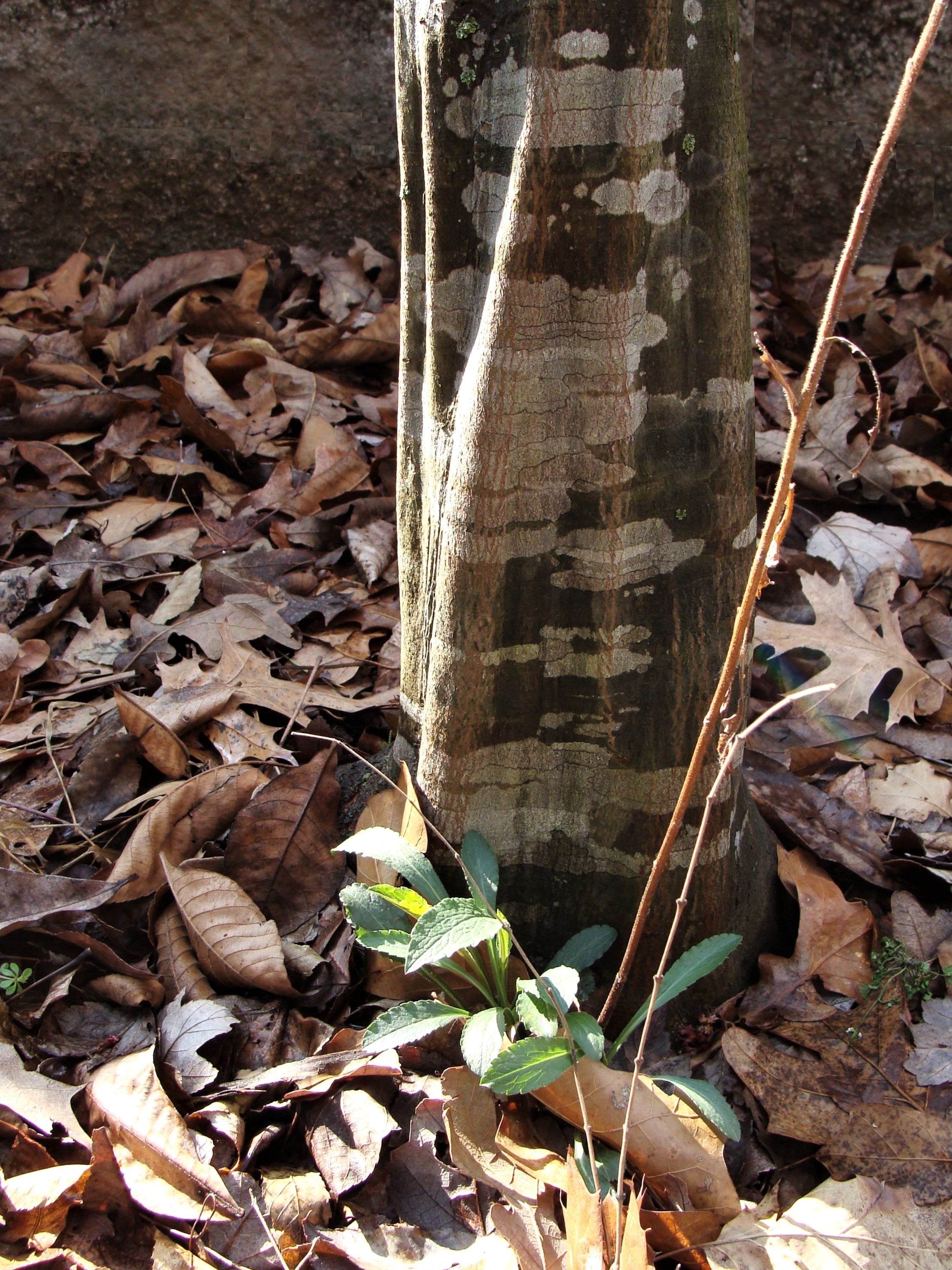
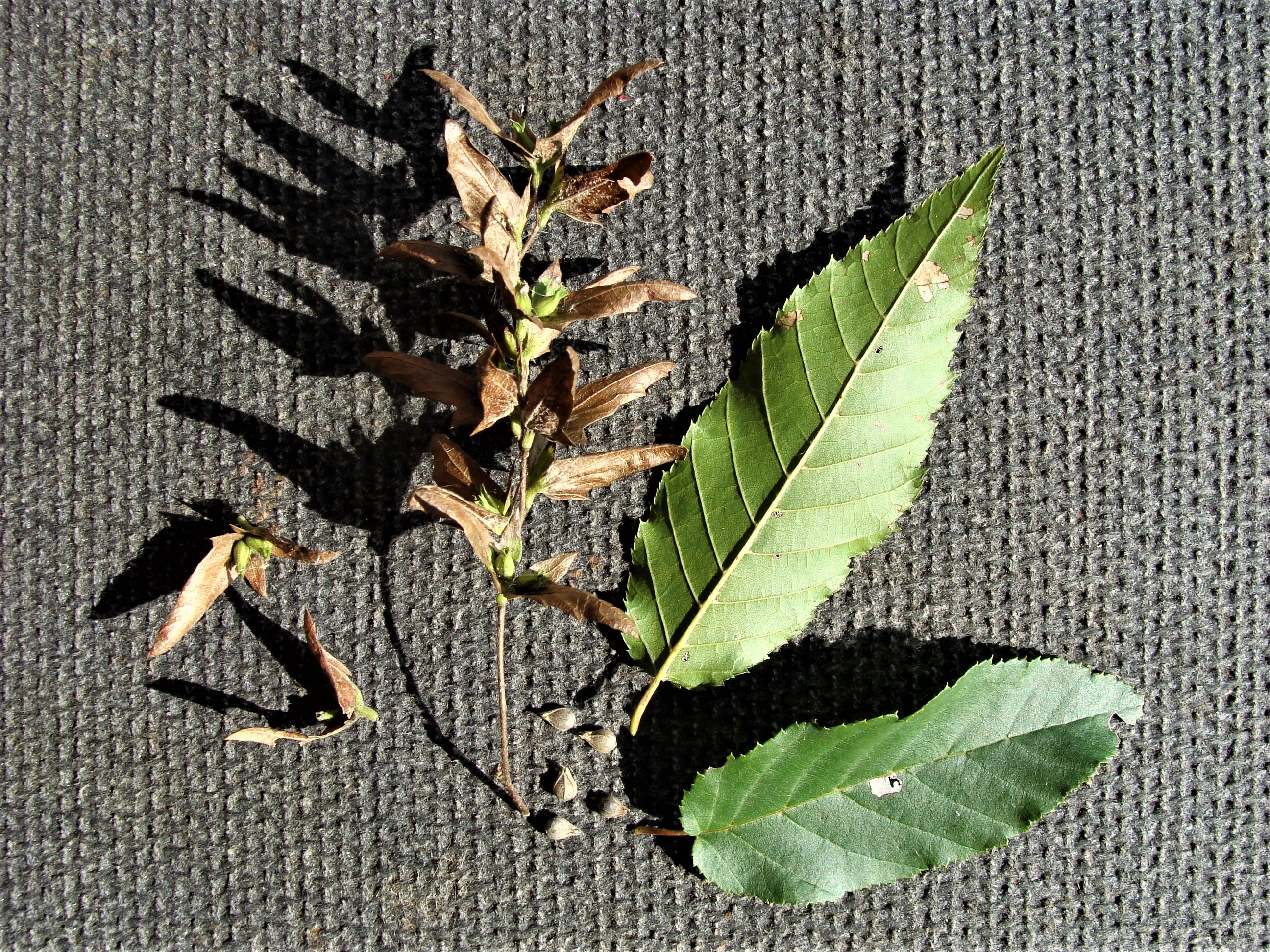
*Link to Arkansas’s Champion Trees: Eastern Hophornbeam (Ostrya virginiana) – Arkansas Department of Agriculture
Article and photographs by ANPS member Sid Vogelpohl

